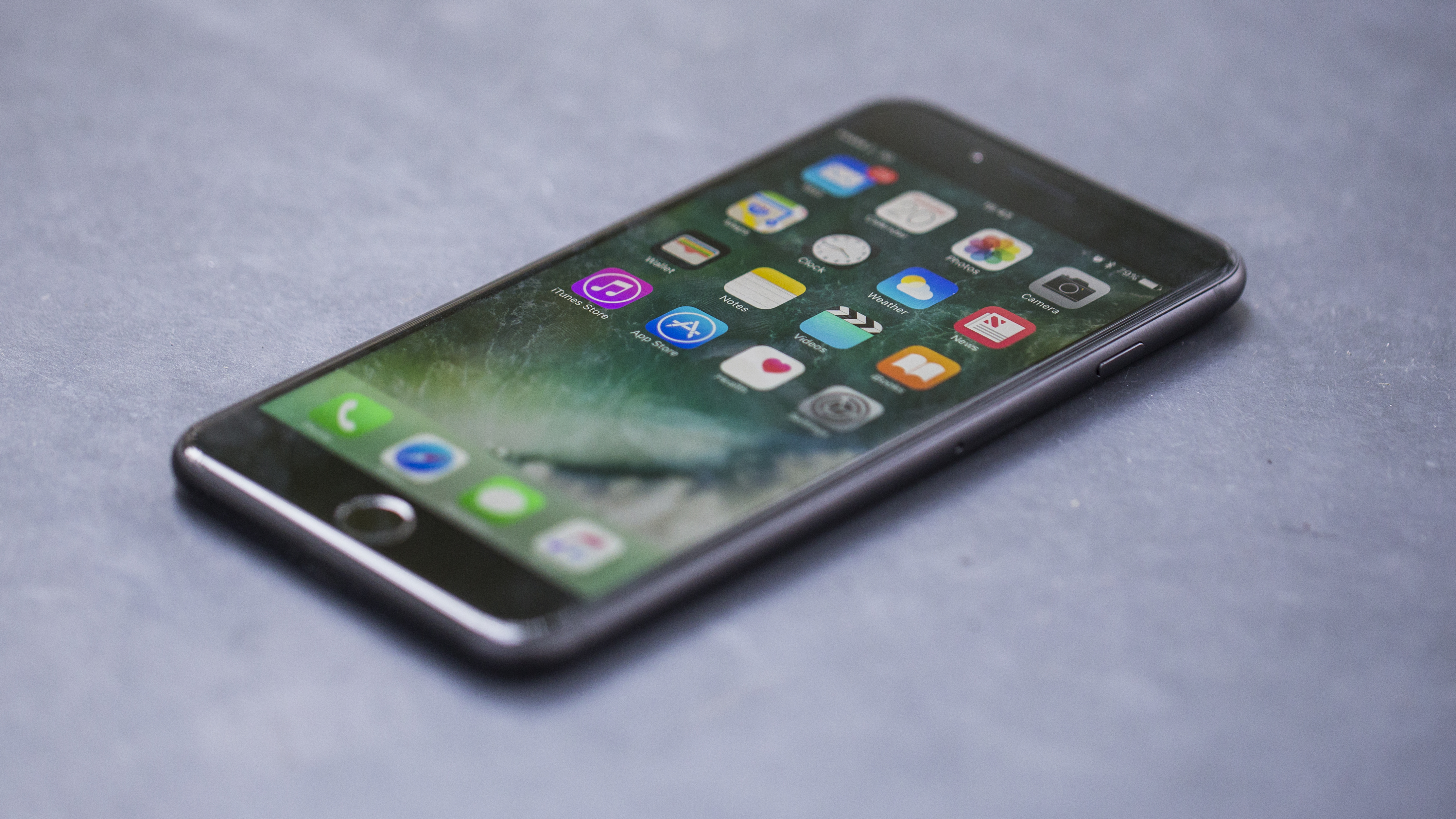Why you can trust TechRadar
- Faster, more powerful chip offers super-slick performance
- Updated to iOS 12, the latest software from Apple
One of the big draws of iPhones for a lot of people is their ease of use, especially if you're already invested in the iDevice ecosystem, and Apple made the iPhone 7 Plus even more user-friendly with iOS 10, along with some hardware upgrades under the hood.
Since its launch though, the iPhone 7 Plus has received the next two major software updates. iOS 11 landed first back in 2017, and most recently Apple has treated it to iOS 12, keeping it in line with its latest iPhone launches.
The 7 Plus boasts the firm's A10 Fusion chip, which Apple claims delivers 40% more performance than the A9 processor in the iPhone 6S Plus, and double the speed of the A8 chip in the iPhone 6 Plus. It is, on paper at least, well equipped to deal with whatever you throw at it.
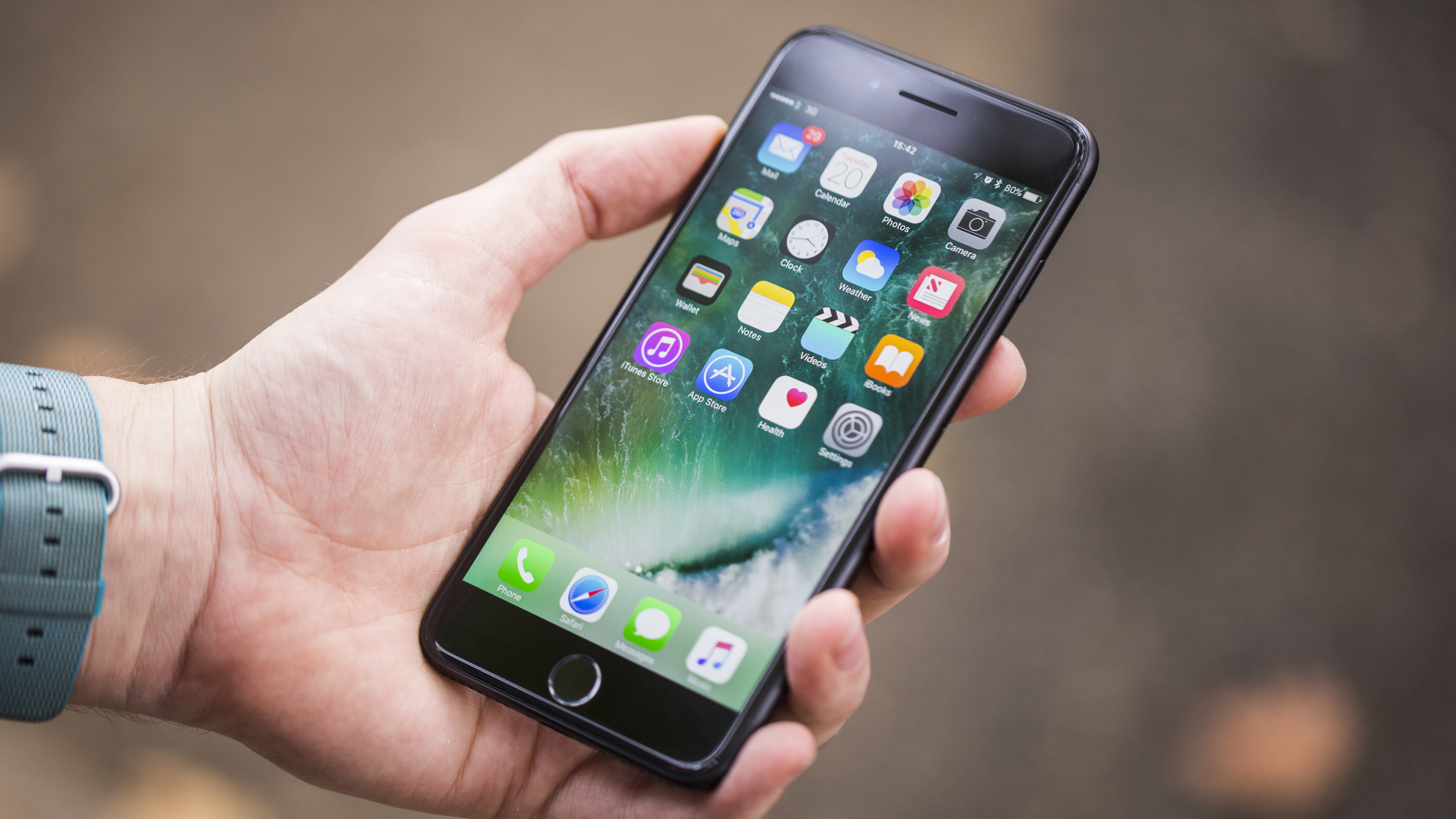
Performance
The iPhone 7 Plus is fast. Really fast. In a simple side by side comparison with the iPhone 6S Plus the 7 Plus was faster every time as we skipped between applications, fired-up multi-tasking and loaded games.
Apple's taken another leap forward in the quality of its chip design, boosting the number of cores from two to four, and coupling this with a meaty 3GB of RAM. The iPhone 7 Plus manages to better even the iPhone 7, which comes with the same chip but only 2GB of RAM.
There was no sign of slowdown, even when we had multiple applications open, were streaming music from Spotify and playing some highly intensive games – the 7 Plus performance is just all-round impressive.
Games loaded without fuss, and gameplay is smooth and detailed on the 7 Plus, with the experience further enhanced by the new dual-speaker setup.
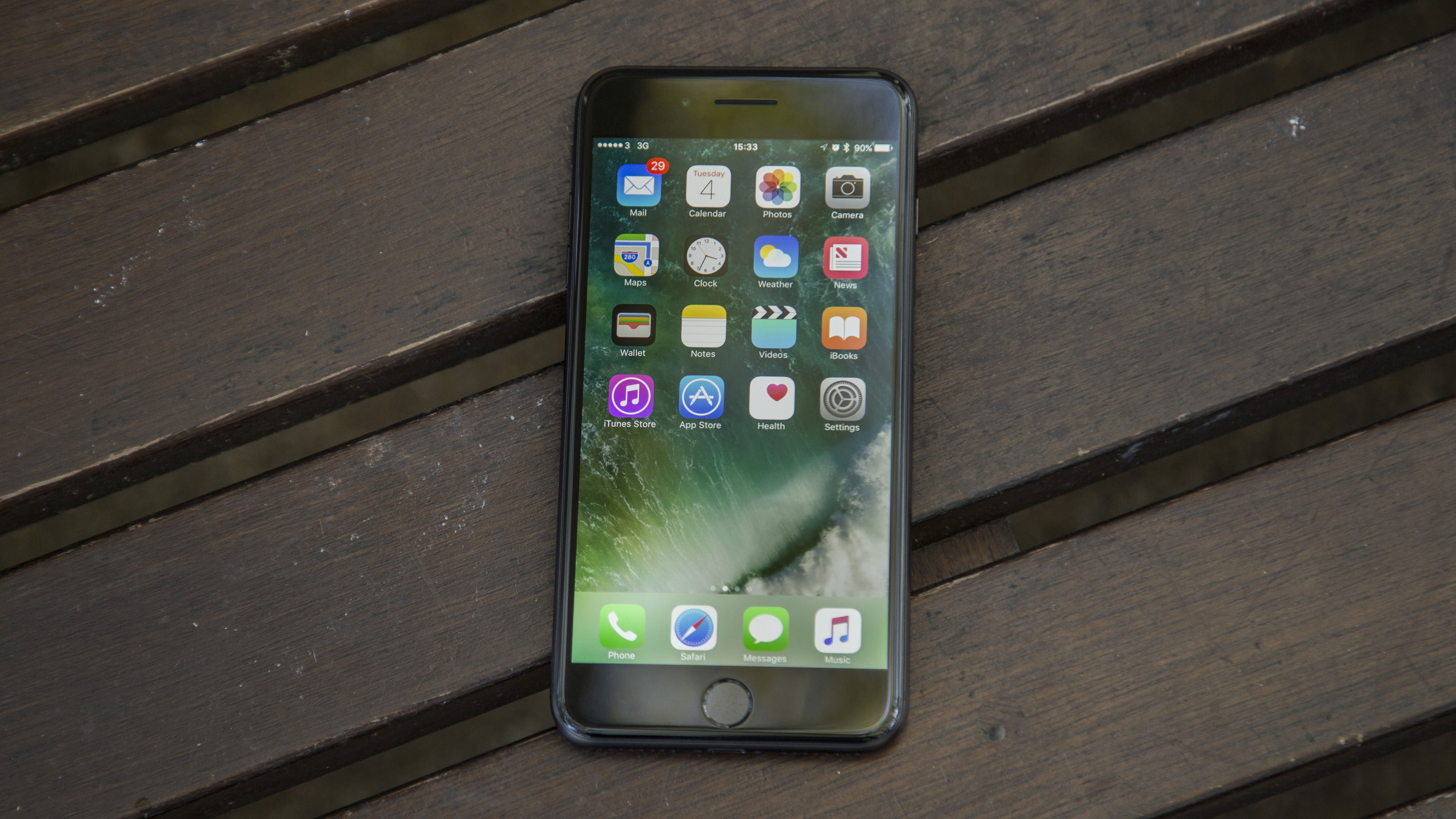
Apple has stuck a speaker at the top and bottom of the handset for stereo sound, and the resulting audio on the 7 Plus is much better than on its predecessors, with twice the volume of the iPhone 6S for room-filling sound.
Playback is equally as good for music, and the iPhone 7 Plus knows when you're holding it in landscape or portrait orientation, and adjusts the output from the speakers to ensure your ears are treated like kings.
As we've mentioned, plugging in for headphone sound can be a little trickier if you don't use the bundled Lightning EarPods, after Apple removed the standard 3.5mm headphone jack. A Lightning-to-3.5mm jack adapter is supplied in the box, but this will likely still irk, and can detract from the overall experience; it certainly had us fuming on more than one occasion.
Running the Geekbench 4 app on the 7 Plus saw it put in a slightly better performance than the iPhone 7, but as expected it comfortably outstripped the 6S Plus, coming in at around 20% faster, while it showed almost double the speed of the 6 Plus – emphatically backing up Apple's claims of serious under-the-hood improvements.
If you upgrade from any previous-generation iPhone, you'll notice the performance jump on the iPhone 7 Plus. It's as simple as that.
iOS 10, iOS 11, iOS 12
- More 3D Touch options in pop ups
- Now with iOS 12
As you've probably worked out by now, the iPhone 7 Plus is buttery smooth in operation, and iOS 10 glides along without a care in the world on the 5.5-inch display.
For those familiar with Apple's operating system, iOS 10 is more of the same, with Apple adding extra details in more obscure places so as not to interrupt the flow of the interface.
The lock screen has gained 3D Touch notifications, enabling you to reply to important messages and accept calendar invites without having to unlock the handset, and a swipe from left to right takes you to a panel stuffed full of various widgets.
You can customize, to an extent, what appears here, and we found the calendar agenda view, news box, weather widget and battery status section all very useful – the latter is excellent for quickly checking on the power levels of your Apple Watch and AirPods (or Bluetooth headset).
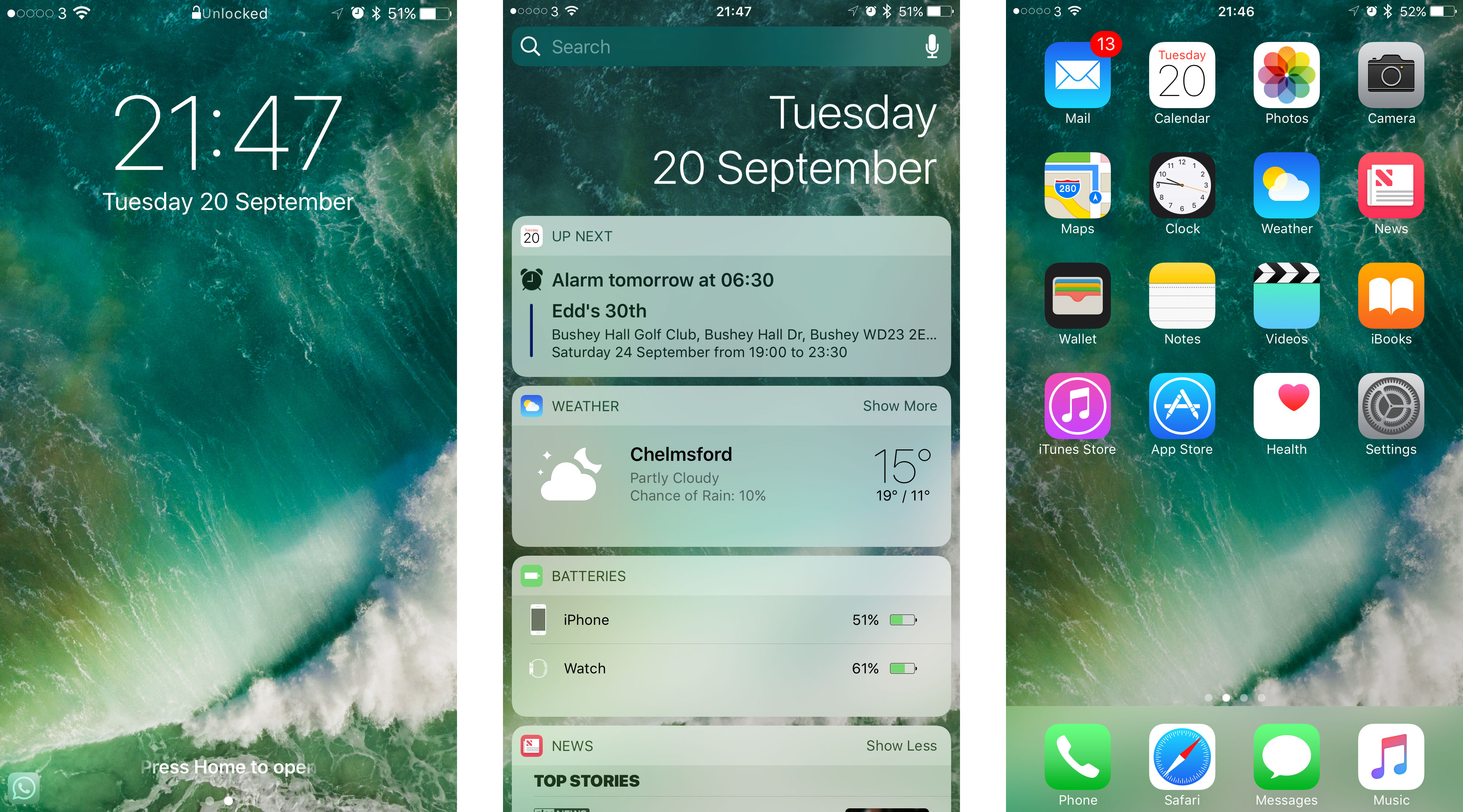
You can also access this customizable panel from your home screen – again, swiping left to right will get you there – but we found it more useful on the lock screen.
The iPhone 7 Plus will also know when you want to use it, with the raise-to-wake feature switching on the screen when you pick the handset up or pull it out of a pocket.
Control Center – accessed by swiping up from the bottom of the screen – has been overhauled, and split into separate panels. The first offers up quick settings such as Wi-Fi and Bluetooth, as well as a screen brightness slide, with music controls now shifted to their own dedicated panel that's just a single sideways swipe away.
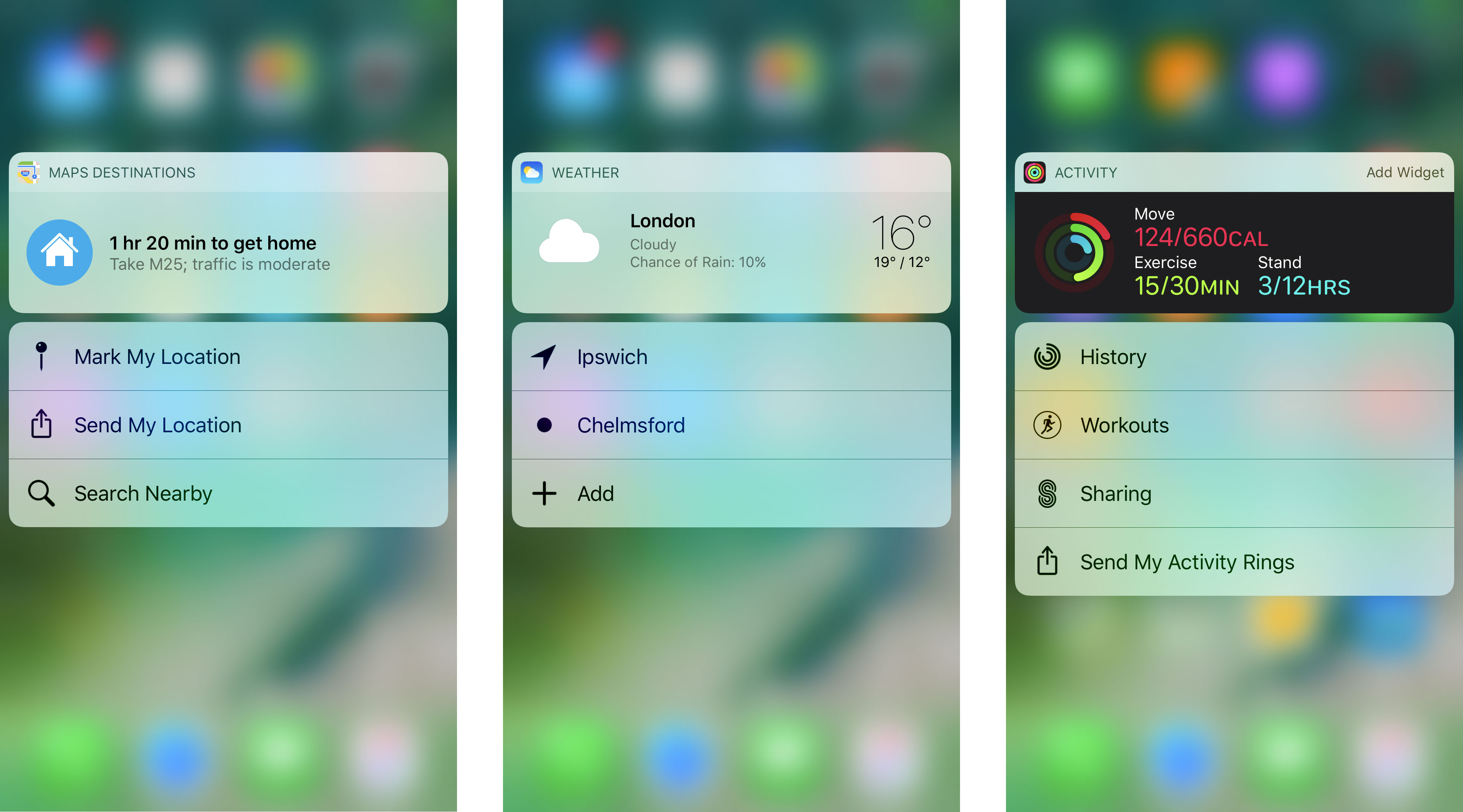
Apple has also added more features to the 3D Touch pop-up bubbles that appear when you hold down on an app icon. These bubbles can now pull through information from the applications they're associated with, be it the latest sports scores or the progress you're making towards your activity goals.
It makes the feature far more useful, and we found ourselves using 3D Touch much more on the 7 Plus thanks to the iOS 10 update – although given the snappy performance of the phone it doesn't take long to fully load an app and then skip back out.
Everything else is pretty much the same, and while you'll certainly feel at home on the iPhone 7 Plus if you're upgrading from a previous iPhone, the on-screen experience may not feel quite as new and exciting as you'd hope.
While the iPhone 7 Plus shipped with iOS 10, it's now on iOS 10.3, which brings will it general improvements with the key thing being better storage management. What does that mean for you?
Well after downloading and installing the iOS 10.3 update on your 7 Plus you'll find some of the storage re-claimed, giving you more space for apps, games, movies and music.
Since then the iPhone 7 Plus has had the iOS 11 and iOS 12 software updates, ensuring it's kept right up to date with all the new iPhones.

TechRadar's former Global Managing Editor, John has been a technology journalist for more than a decade, and over the years has built up a vast knowledge of the tech industry. He’s interviewed CEOs from some of the world’s biggest tech firms, visited their HQs, and appeared on live TV and radio, including Sky News, BBC News, BBC World News, Al Jazeera, LBC, and BBC Radio 4.
